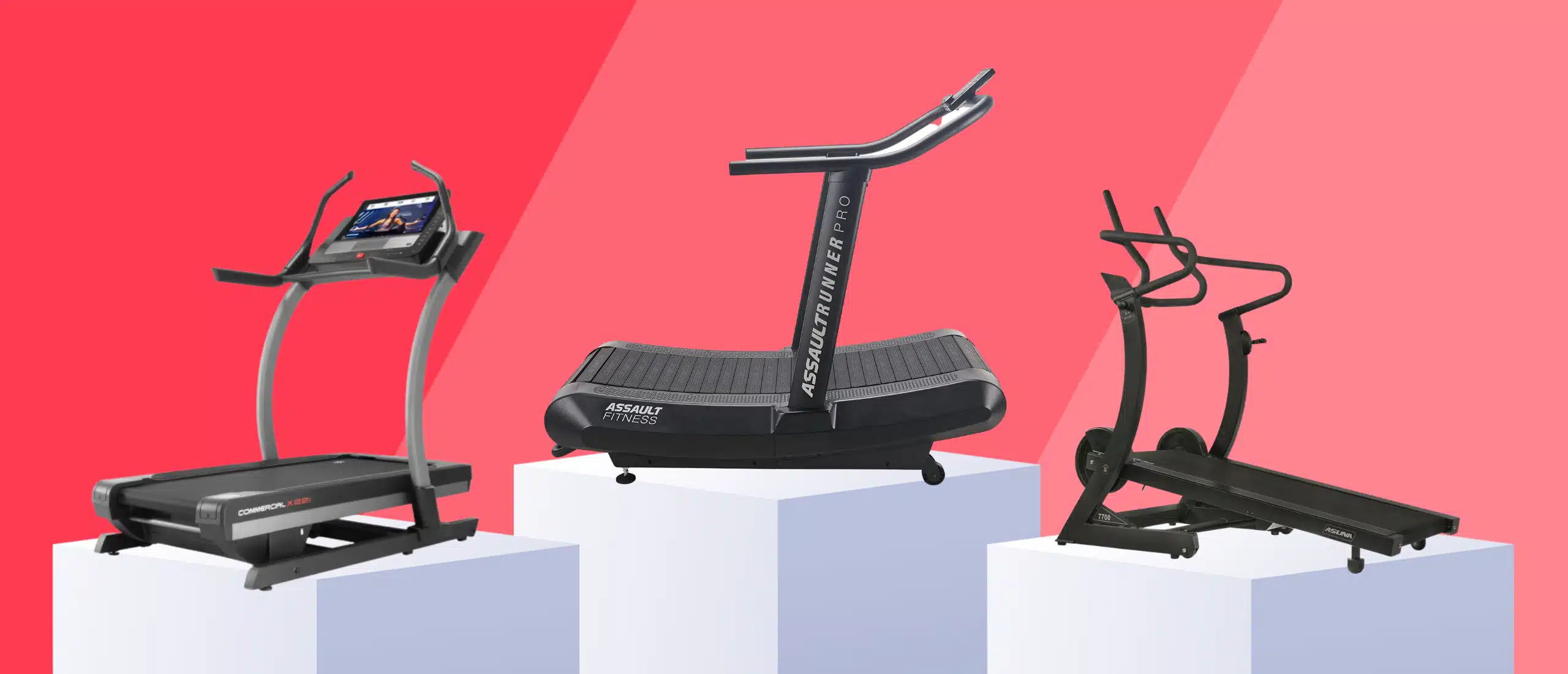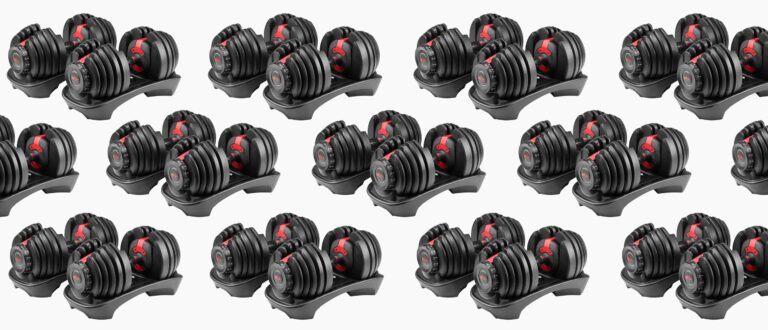Manual Treadmills Are Calorie-Torching Machines—Here’s Why You Need One
When it comes to cardio, our list of excuses is long. Too hot outside? Looks like we can’t go for that run, after all. Getting dark after work earlier (or worse, before 5pm hits)? Scratch the post-dinner walk. And, anything below 60 degrees? Forget about it. However, there is a cure for your most obscene excuses: a home gym. If you’re thinking the last thing you need is a glorified coat rack, hear us out.
The right cardio machine can boost functional fitness while notching up your daily step count and VO2 max—improvements that add up to a longer, healthier life. A classic motorized treadmill seems like the obvious choice to get the job done. But before you pull the trigger, consider its often-overlooked cousin: the manual treadmill.
Manual treadmills present some unique benefits that might provide an even better workout than the motorized alternative. They burn approximately 30 percent more calories than a motorized treadmill (1), skyrocket the intensity of any sprint session, and react quickly to changes in pace—making them the perfect candidate whether you’re chasing endorphins or rehabbing an injury. Here’s everything you need to know.
What is a Manual Treadmill?
A manual treadmill is a motorless treadmill that requires your effort to move the belt. The belt of a manual treadmill won’t move unless you do. Meaning, rather than simply moving your body forward, your muscles and heart have to put in the extra work to keep the belt moving, too.
How to Choose the Right Manual Treadmill
Since manual treadmills naturally elevate the intensity of any workout, they’re a great option for both walking and running. That said, most options specifically cater to one or the other. Here’s what to look for.
For walking
Most walking manual treadmills are more compact, featuring a smaller, flat deck and shorter handrails. If you have a longer stride or just enjoy a little wiggle room, you’ll want to keep an eye on the dimensions. It’s also important to note, many walking models don’t support speeds beyond a brisk walk. So, if you plan to build up to running, you’ll want to look for an option built for higher speeds from the jump.
For sprints and HIIT
Manual treadmills designed for running typically have a larger deck to accommodate longer strides. You also have your pick of a flat or curved deck. Models with a curved deck are ideal for sprints and are praised in the running community for their ability to reduce impact and last forever. Flat options, on the other hand, are preferred for a combo of walking and running and make a better proxy for sled pushes.
For long-distance running
It’s important to note if you’re interested in logging big miles, a manual treadmill isn’t your best bet. That said, if you have your heart set on both, a hybrid model—like the NordicTrack x22i—is a solid choice. Hybrid treadmills have the option to switch between motorized and manual modes for a workout experience customizable to your current mood or goals. To be clear: contrary to popular belief, most motorized treadmills are not hybrid. Attempting to use a standard motorized treadmill with the motor turned off can damage the motor.
The Best Manual Treadmills
Manual treadmills for running
Ready to push your limits? These manual treadmills designed specifically with curved tread decks and slatted running belts are a runner’s dream.
RUN FASTER
Manual treadmills for walking
If you plan to use your manual treadmill for walking, you’re better off opting for a flat treadmill belt. Bonus: they tend to be way more affordable than treadmills offering cushy curved decks.
TRAIN SMARTER
Manual treadmills for a hybrid experience
Maybe you don’t want to be put in a box. You want to walk and run, and the option to use your treadmill motorized or in manual mode. You, my friend, are looking for a hybrid treadmill.
The Benefits of Manual Treadmills
As manual treadmills ramp up the intensity of any walk or run, they notch up the benefits, too. Here’s what to expect.
Burn more calories
One study suggests that when moving at the exact same speed, you burn approximately 30 percent more calories per minute on a manual treadmill than on a motorized one (1). Your muscles, and thus your heart, work harder to provide the necessary power to manually move the belt.
Activate more muscles
Because manual treadmills involve pushing against the resistance of the belt to keep things moving, they fire up your muscles more than a motorized treadmill. The muscles of your lower body—including your glutes, hamstrings, quads, calves, and intrinsic muscles of your ankles and feet—take on the brunt of the work. Meanwhile, your core steps in to counter the additional force, keeping you stable with each step.
Increase aerobic capacity
The more muscles you activate, the harder your heart has to work to deliver fresh blood and oxygen and clear waste like lactic acid. Even at slower speeds, working out on a manual treadmill jacks up your heart rate, pushing you into higher-intensity zones. By working harder, you can expect to boost your VO2 max—widely known as the best indicator of cardiovascular endurance and aerobic performance.
PERFORM BETTER
Promote good form
One of the most common running mistakes is overstriding—or kicking your foot too far out in front of you, striking with your heel, and pulling your body forward. A manual treadmill naturally corrects this problem, since the only way you’ll generate enough power to keep the belt moving is by striking with your midfoot directly below your hips and pushing your body forward. This, in turn, shortens your stride, increases your cadence, and fires up the powerful muscles of your posterior chain (most importantly, your glutes)—the trifecta of running efficiency.
Rehab injuries
Since manual treadmills only move when you do, they’re a safer option for beginners, seniors, or those currently rehabilitating an injury. When you slow down or stop, so does the belt. Plus, they come equipped with handrails that allow you to push harder when you feel like it or pull back when you’re feeling unsteady.
Manual Treadmill FAQs
You’ve got questions about manual treadmills, we’ve got answers.
Are manual treadmills better than motorized treadmills?
It depends. Manual treadmills can help build muscle and burn more calories than a motorized treadmill. They’re also great for walking and sprinting, but not the best for mid- to long-distance running since you have to keep the belt moving with your own power. Motorized treadmills, on the other hand, tend to have more incline and speed options, and are better for set-it-and-forget-it workouts—like zone 2 training.
Is it hard to walk on a manual treadmill?
It’s harder to walk on a manual treadmill than on a motorized one because all of the power required to propel the running belt forward is generated by your own muscles. That said, it shouldn’t be so hard that you can’t move the belt forward. When shopping for a manual treadmill for walking, look for options with built-in or adjustable incline, and adjustable resistance settings—these features make it easier to keep the belt moving at a decent speed.
Are manual treadmills quiet?
Generally, yes. Manual treadmills are much quieter than motorized treadmills since you avoid the typical noise of a running motor. However, if you’re sprinting, the treadmill will make some noise based on how loud and heavy your steps are.
References
1. Schoenmakers, P. et al (2018). The Physiological and Perceptual Demands of Running on a Curved Non-Motorized Treadmill: Implications For Self-Paced Training.


















